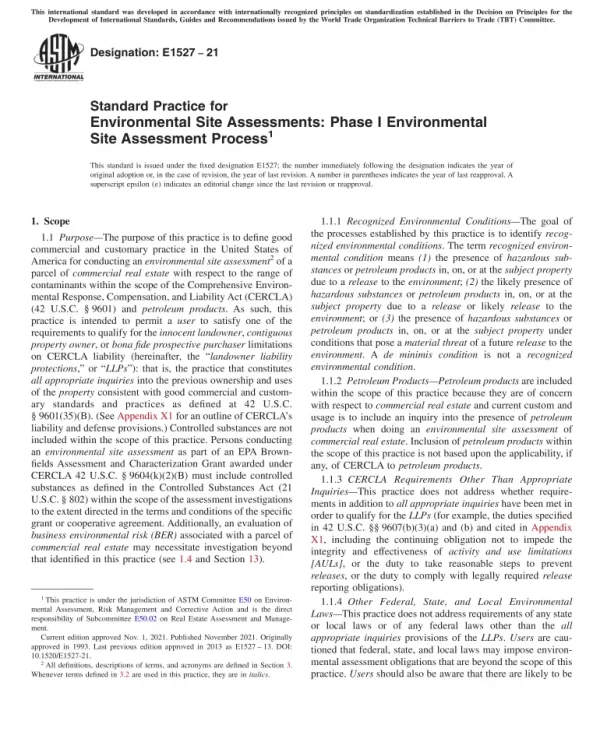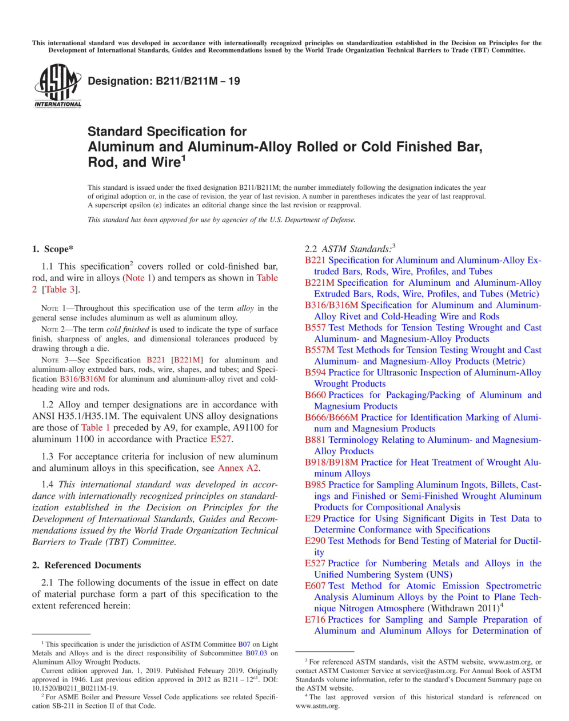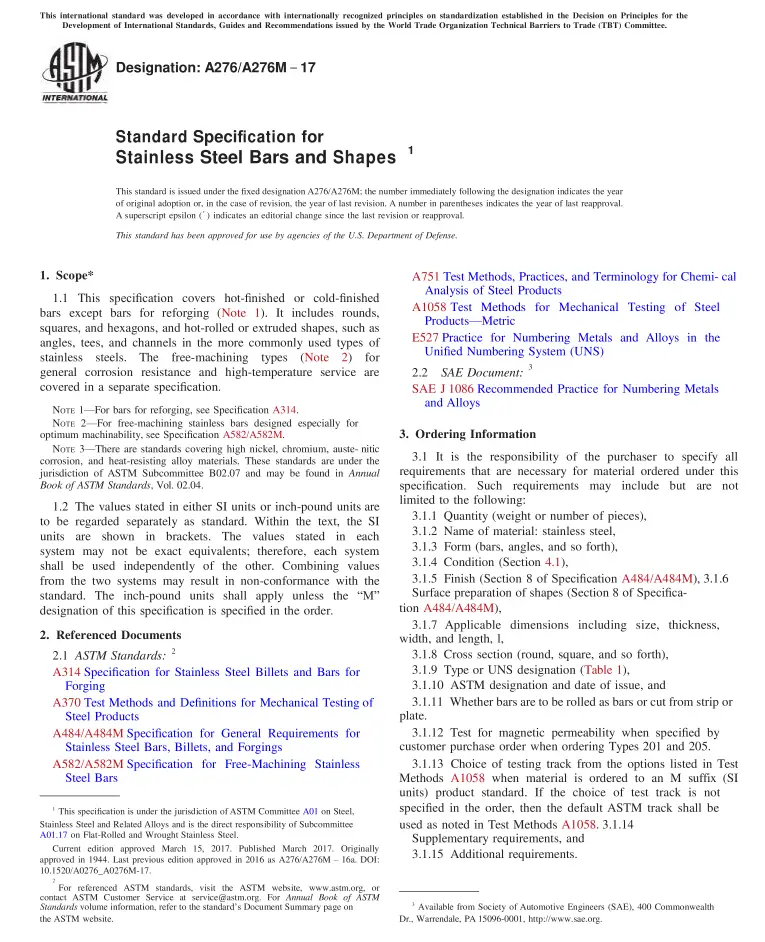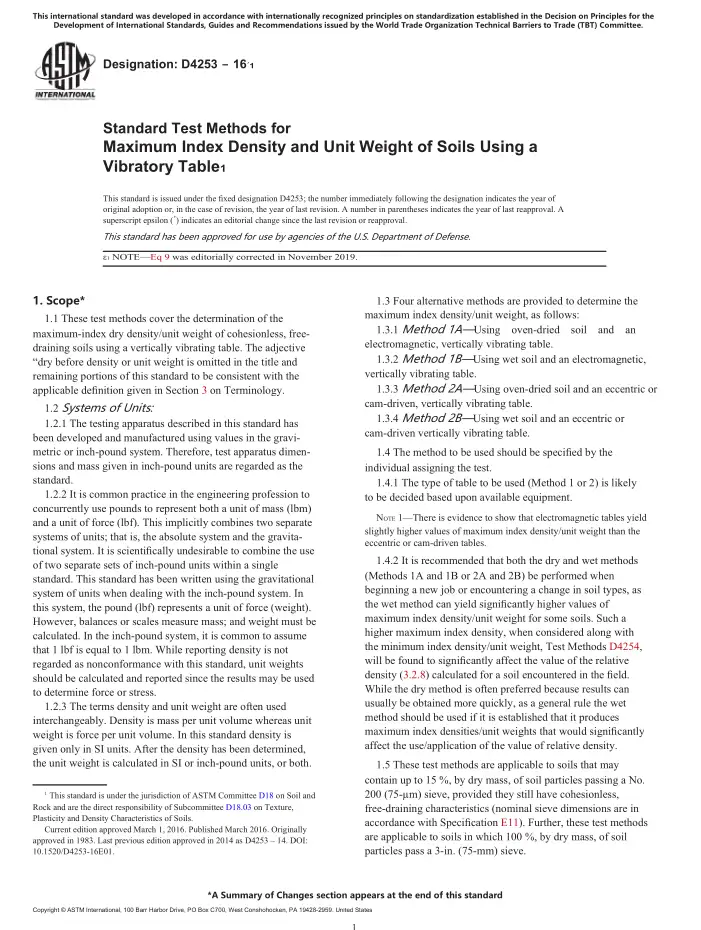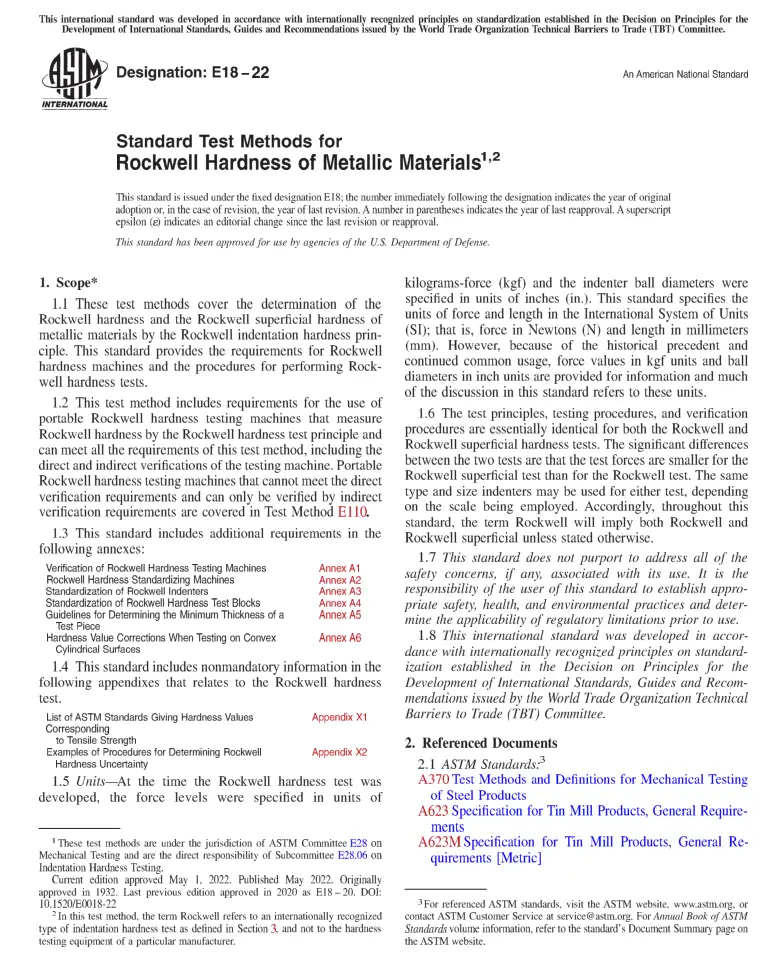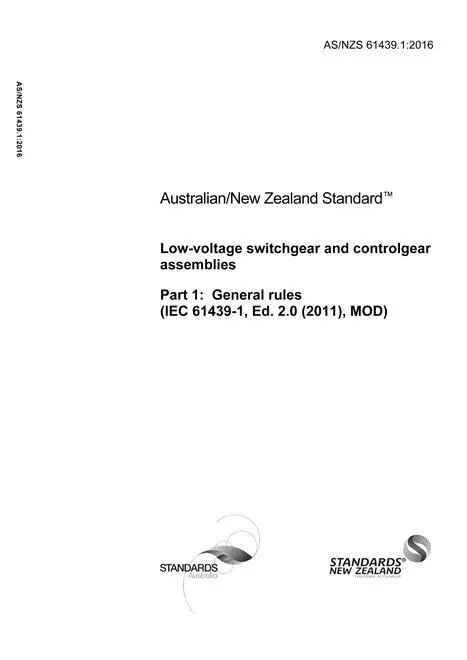ASTM E1527, 2021 Edition – Standard Practice for Environmental Site Assessments: Phase I Environmental Site Assessment Process
Purpose—The purpose of this practice is to define good commercial and customary practice in the United States of America for conducting an environmental site assessment2 of a parcel of commercial real estate with respect to the range of contaminants within the scope of the Comprehensive Environmental Response, Compensation, and Liability Act (CERCLA) (42 U.S.C. § 9601) and petroleum products. As such, this practice is intended to permit a user to satisfy one of the requirements to qualify for the innocent landowner, contiguous property owner, or bona fide prospective purchaser limitations on CERCLA liability (hereinafter, the “landowner liability protections,” or “LLPs”): that is, the practice that constitutes all appropriate inquiries into the previous ownership and uses of the property consistent with good commercial and customary standards and practices as defined at 42 U.S.C. § 9601(35)(B). (See Appendix X1 for an outline of CERCLA’s liability and defense provisions.) Controlled substances are not included within the scope of this practice. Persons conducting an environmental site assessment as part of an EPA Brownfields Assessment and Characterization Grant awarded under CERCLA 42 U.S.C. § 9604(k)(2)(B) must include controlled substances as defined in the Controlled Substances Act (21 U.S.C. § 802) within the scope of the assessment investigations to the extent directed in the terms and conditions of the specific grant or cooperative agreement. Additionally, an evaluation of business environmental risk (BER) associated with a parcel of commercial real estate may necessitate investigation beyond that identified in this practice (see 1.4 and Section 13).
Recognized Environmental Conditions—The goal of the processes established by this practice is to identify recognized environmental conditions. The term recognized environmental condition means (1) the presence of hazardous substances or petroleum products in, on, or at the subject property due to a release to the environment; (2) the likely presence of hazardous substances or petroleum products in, on, or at the subject property due to a release or likely release to the environment; or (3) the presence of hazardous substances or petroleum products in, on, or at the subject property under conditions that pose a material threat of a future release to the environment. A de minimis condition is not a recognized environmental condition.
Petroleum Products—Petroleum products are included within the scope of this practice because they are of concern with respect to commercial real estate and current custom and usage is to include an inquiry into the presence of petroleum products when doing an environmental site assessment of commercial real estate. Inclusion of petroleum products within the scope of this practice is not based upon the applicability, if any, of CERCLA to petroleum products.
CERCLA Requirements Other Than Appropriate Inquiries—This practice does not address whether requirements in addition to all appropriate inquiries have been met in order to qualify for the LLPs (for example, the duties specified in 42 U.S.C. §§ 9607(b)(3)(a) and (b) and cited in Appendix X1, including the continuing obligation not to impede the integrity and effectiveness of activity and use limitations [AULs], or the duty to take reasonable steps to prevent releases, or the duty to comply with legally required release reporting obligations).
Other Federal, State, and Local Environmental Laws—This practice does not address requirements of any state or local laws or of any federal laws other than the all appropriate inquiries provisions of the LLPs. Users are cautioned that federal, state, and local laws may impose environmental assessment obligations that are beyond the scope of this practice. Users should also be aware that there are likely to be other legal obligations with regard to hazardous substances or petroleum products discovered in, on, or at the subject property that are not addressed in this practice and that may pose risks of civil and/or criminal sanctions for noncompliance.3
Documentation—The scope of this practice includes research and reporting requirements that support the user’s ability to qualify for the LLPs. As such, sufficient documentation of all sources, records, and resources utilized in conducting the inquiry required by this practice must be provided in the written report (refer to 8.1.9 and 12.2).
Objectives—Objectives guiding the development of this practice are (1) to synthesize and put in writing good commercial and customary practice for environmental site assessments for commercial real estate; (2) to facilitate high quality, standardized environmental site assessments; (3) to provide a practical and reasonable standard practice for conducting all appropriate inquiries; and (4) to clarify an industry standard for all appropriate inquiries in an effort to guide legal interpretation of the LLPs.
Units—The values stated in inch-pound units are to be regarded as the standard. The values given in parentheses are mathematical conversions to SI units that are provided for information only and are not considered standard.
Considerations beyond Scope—The use of this practice is strictly limited to the scope set forth in this section. Section 13 of this practice identifies, for informational purposes, certain environmental conditions (not an all-inclusive list) that may exist at a subject property that are beyond the scope of this practice, but may warrant consideration by parties to a commercial real estate transaction. The need to include an investigation of any such conditions in the environmental professional’s scope of services should be evaluated based upon, among other factors, the nature of the subject property and the reasons for performing the assessment (for example, a more comprehensive evaluation of business environmental risk) and should be agreed upon between the user and environmental professional as additional services beyond the scope of this practice before initiation of the environmental site assessment process.
This practice offers a set of instructions for performing one or more specific operations. This document cannot replace education or experience and should be used in conjunction with professional judgment. Not all aspects of this practice may be applicable in all circumstances. This ASTM standard is not intended to represent or replace the standard of care by which the adequacy of a given professional service must be judged, nor should this document be applied without consideration of a project’s many unique aspects. The word “Standard” in the title means only that the document has been approved through the ASTM consensus process.
This standard does not purport to address all of the safety concerns, if any, associated with its use. It is the responsibility of the user of this standard to establish appropriate safety, health, and environmental practices and determine the applicability of regulatory limitations prior to use.
This international standard was developed in accordance with internationally recognized principles on standardization established in the Decision on Principles for the Development of International Standards, Guides and Recommendations issued by the World Trade Organization Technical Barriers to Trade (TBT) Committee.
2 All definitions, descriptions of terms, and acronyms are defined in Section 3. Whenever terms defined in 3.2 are used in this practice, they are in italics.
3 Many states and other jurisdictions have differing definitions for terms used throughout this practice, such as “release” and “hazardous substance.” If a Phase I Environmental Site Assessment is being conducted to satisfy state requirements and to qualify for the state (or other jurisdiction) equivalent of LLPs, users and environmental professionals are cautioned and encouraged to consider any differing jurisdictional requirements and definitions while performing the Phase I Environmental Site Assessment. Substances that are outside the scope of this practice (for example, emerging contaminants that are not hazardous substances under CERCLA) may be regulated under state law and may be federally regulated in the future. Although the presence or any release/threatened release of these substances are “non-scope considerations” under this practice, the user may nonetheless decide to include such substances in the defined scope of work for which the environmental professional conducting the Phase I Environmental Site Assessment is engaged. See 13.1.2.
General Product Information:
| Revision | 2021 Edition |
| Document Type | |
| Document Language | English |
| Pages | 59 |
| Publisher | ASTM International (ASTM) |
| Status | Current |

